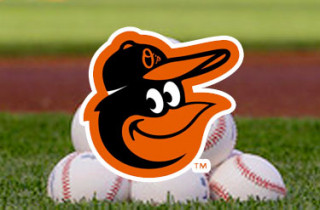LAKE BUENA VISTA, Fla. - Call it the Buster Posey rule. Or the Mike Matheny rule.
Major League Baseball decided Wednesday at the Winter Meetings to ban home plate collisions between a hard-charging runner and a sitting duck catcher. The rule change needs to be approved by the players' union. If the union doesn't approve, MLB can implement the rule in 2015.
"Ultimately, what we want to do his change the culture of acceptance that these plays are ordinary and routine and an accepted part of the game,'' New York Mets general manager Sandy Alderson, the chairman of MLB's rules committee, said at a late afternoon press conference "The costs associated in terms of health and injury just no longer warrant the status quo.''
Alderson said that a runner bowling over the catcher will be called out and could face fines and suspensions.
The rule will state that a player will have to slide into home plate and that a catcher can't block the home plate without the ball. The new rule upsets a longstanding tradition of runners knocking over the catcher. The most famous collision came in the 1970 All-Star Game, when Pete Rose ran over catcher Ray Fosse, who was never the same after that.
The issue of home plate discussions intensified in the spring of 2011 when San Francisco Giants catcher Buster Posey suffered a broken leg after getting run over by the Marlins' Scott Cousins.
Matheny, a former catcher and now manager of the St. Louis Cardinals, has been campaigning for the rule change for the last year. Earlier in the day, he told MASN that the increase in the awareness of concussions is the biggest reason to ban the collisions. "We don't want this to be swept under the carpet,'' Matheny says.
Other questions after the third day of the Winter Meetings:
Question: What is going on with expanded replay?
Answer: MLB executives met with managers Wednesday morning for a two-hour discussion on instant replay. There are still several adjustments that need to be made, but generally speaking, managers and general managers are for increased technology to help eliminate human error. MLB executive Joe Torre said that nothing is set in stone, but that they are getting close to finalizing how things are going to work.
ilwaukee Brewers general manager Doug Melvin is for expanding replay, especially if it doesn't add to the time of game. But he also thinks umpires set a good precedent in Game 1 of the World Series when they met and reversed a call on a play by St. Louis shortstop Pete Kozma. Kozma made an obvious error, but Dana DuMuth ruled the ball popped out in a transfer while throwing the ball.
"I think they should do that more of what they did in the World Series, that would be a good thing,'' Melvin says. And, Melvin says, it is amazing that there are some 133,200 outs in a season and MLB is implementing a system to correct a handful of mistakes.
Question: Why does agent Scott Boras draw such a big crowd of reporters when he walks through the lobby?
Answer: It's because he has most of the big-name clients, such as Shin-Soo Choo. Speculation is that the market has dried up for Choo, an excellent leadoff batter who has a .400 on-base percentage, but Boras says that he has at least one seven-year offer for the outfielder. The rule of thumb here is to never doubt Boras during November, December and January. The comical part was the tweets about the mass of reporters looking for news. One reporter tweeted, "Some one send a rescue team. I'm stuck in the middle of the Scott Boras scrum.'' Another compared it to a Friday-after-Thanksgiving sale: "No, they aren't giving away free TVs.''
Question: What are the Seattle Mariners up to with all these new hitters?
Answer: They've signed second baseman Robinson Cano and picked up first basemen Corey Hart and Logan Morrison. Seems like they are on a mission to get as many first basemen/DHs as possible. But the short answer is that after five consecutive losing seasons, Mariners ownership is tired of losing. So they are getting some big bats to support to a strong rotation.
Question: What happened to the Dodgers' possible trade of outfielder Matt Kemp?
Answer: Two things: big contract and questionable medical reports. The Dodgers will have to find a way to keep four outfielders fresh next season.
Question: What hasn't Tampa Bay traded David Price?
Answer: Price has two years left on his contract and the Rays have used the Winter Meetings to find out about the market for Price. This is a trade that's going to take a while. The Rays are in no hurry. If they get the right package of players, they'd probably trade Price.
Question: What is the Rule 5 draft?
Answer: The Rule 5 draft gives teams a chance to find a diamond in the rough via a draft of players that are left off of 40-man rosters. It takes place Thursday at 9 a.m. Teams pay $50,000 to select a player in the draft, and if that player doesn't stay on the selecting team's 25-man roster for the full season, he must be offered back to his former team for $25,000.
The Orioles picked up Ryan Flaherty in the Rule 5 draft, "and I thought he's done a nice job for us. You can find good players in the Rule 5 draft,'' the Orioles' Dan Duquette says.
Other players that have made the majors through this draft include Johan Santana, Dan Uggla, Josh Hamilton and Shane Victorino. According to MLB.com, of the 121 players taken in the draft since 2006, 38 have made the big leagues.
By accepting you will be accessing a service provided by a third-party external to https://www.masnsports.com/





